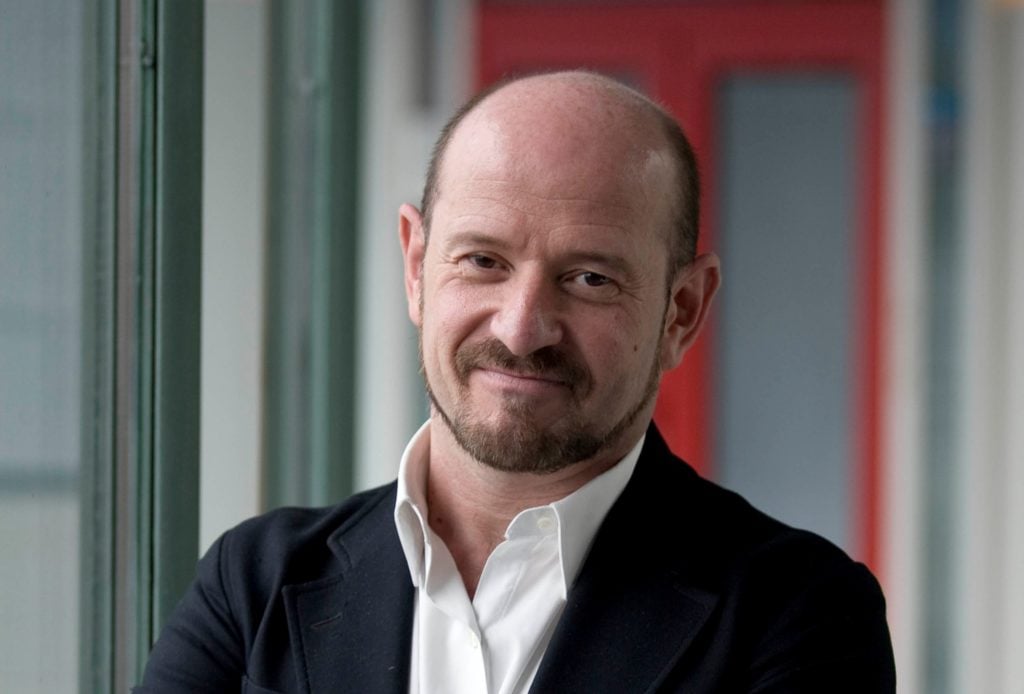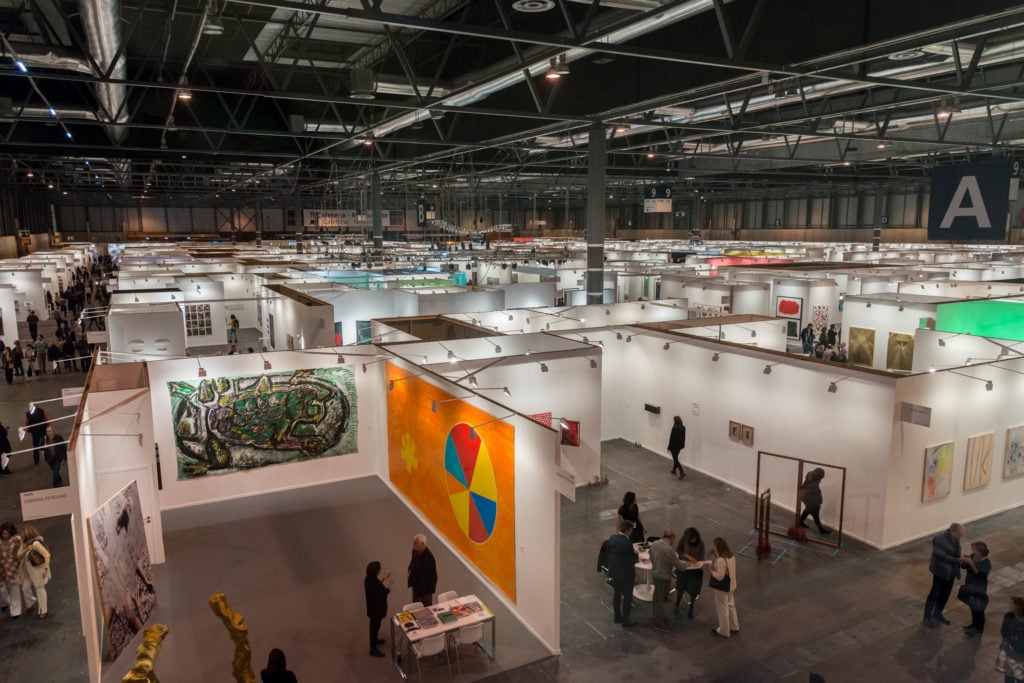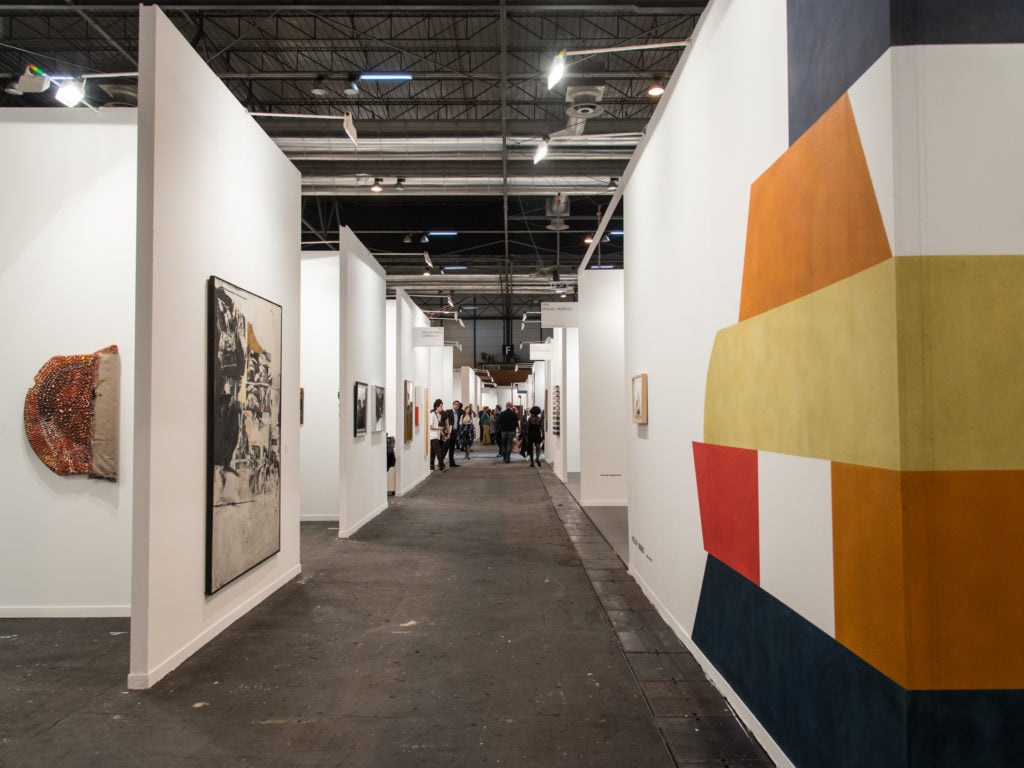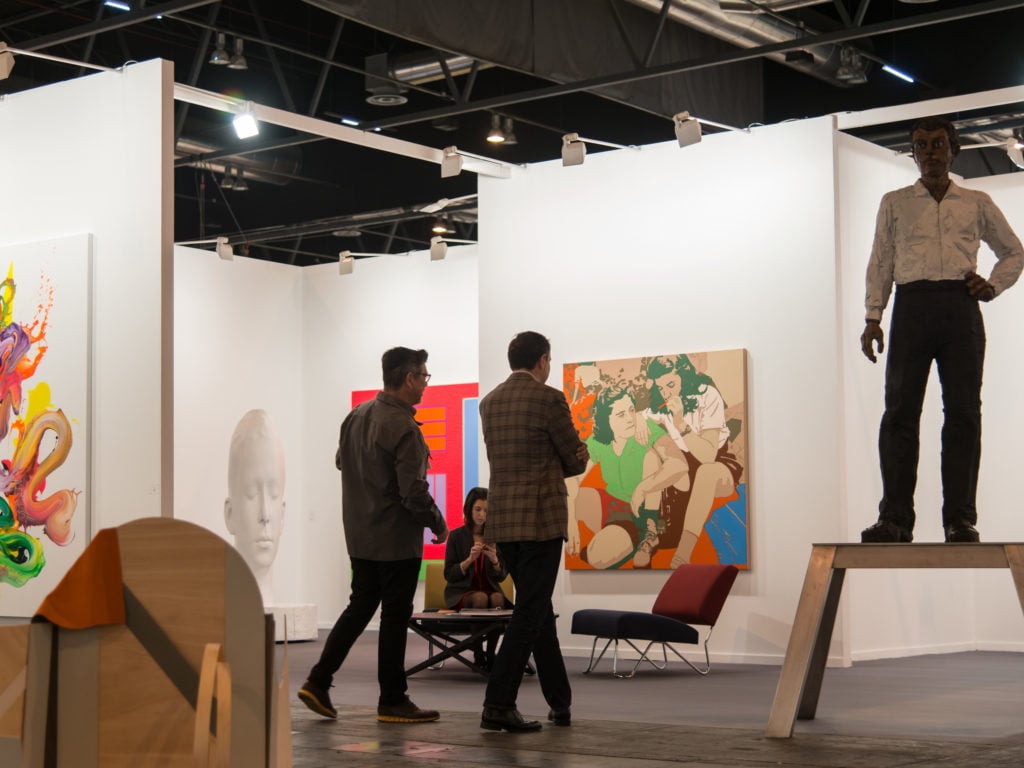How ARCOmadrid Became One of the Most Well-Attended Art Fairs in the World


Taylor Dafoe

With each passing year, the field of international art fairs vying for visitors and industry attention becomes more and more competitive. However, ARCOmadrid has remained among the most well-attended fairs in the world, attracting hundreds of galleries and some 90,000 people to the Spanish capital each year.
The fair will try to build on that success as it kicks off its 37th edition this week. On Wednesday, ARCO will launch with two days of VIP previews before opening up to the general public on February 23. This year’s iteration will feature some 211 galleries from 29 countries, spread across four different sectors.
Notably, the 2018 edition will not offer a sector dedicated to a guest country, as it has in the past. Instead, the fair has created a new sector called “The Future” and has turned the keys over to Spanish curator Chus Martinez, who has organized a show that addresses the future and our anxieties surrounding it.
artnet News spoke with the director of ARCOmadrid, Carlos Urroz, about this new program, how ARCO maintains its robust attendance, and how the Catalonian Separatist Movement will be reflected in this year’s fair.
ARCOmadrid boasts some of the highest attendance numbers among all international art fairs. How and why has the fair consistently been able to achieve that feat?
We are the main contemporary art event in all of Spain. That means that even people who never go to galleries or museums attend ARCO every year. It’s similar to what happens with the São Paolo Biennial in Brazil or with the Turner Prize in London—it’s a moment where the media and art people and non-art people alike pay attention. I think it has also created a larger awareness among the general public about the relevance of contemporary art.

View of ARCOmadrid 2017. Courtesy of ARCOmadrid.
What responsibilities come with such a high-profile status, especially for you?
It represents two major challenges that I can see. One is the fact that the general public should not make it more difficult for galleries to connect with collectors. That’s why, for the last five years, we have set aside two days of professional visits exclusively for guests of the galleries, in advance of the three days dedicated to the public. The other challenge is to make sure that the public that comes to ARCO will continue to attend galleries, museums, biennials, and other contemporary art projects. We want to foster an informed public that contributes to the dialogue around all contemporary art events, not just ARCO.
The biggest addition for this year’s fair is the “Future” sector. Can you tell me about how the program came about and why you chose to move away from the guest country model?
Well, the idea of spotlighting the art of individual countries is well-trodden territory, especially with the Venice Biennale. It is not as relevant as it once was, and we’ve always had a problem in classifying which artist is from which country. For a couple of years now we’ve been thinking about other models and ideas we might try. Three years ago we didn’t have a guest country because it was our 35th anniversary, and this year we decided to go with a theme. Working very closely with the curator of the sector, Chus Martinez, who is a brilliant thinker and intellectual, we came up with this idea of focusing on the future and the anxieties that surround it. Also, it connects to ARCO’s long history of innovation. ARCO was the first fair working with curators in selecting the galleries, for instance, as well as one of the first to integrate a seminar into the fair.
Is the thematic model one that you’ll continue to explore in future years?
Sure. If it works, we’d be very willing to explore it again. We’ll have to see the results. We hope that the galleries are satisfied, that the artists are satisfied, that the public finds the content interesting, and that the related projects that run concurrently in the city are successful. But it doesn’t mean that we’re done with spotlighting guest countries either. In 2019, we’ll definitely focus on one country again. After that, maybe we can alternate between a thematic idea and a guest country every other year. That will give us more time to work on both sectors.

View of ARCOmadrid 2017. Courtesy of ARCOmadrid.
A couple of times now, when talking about priorities for the fair, you’ve listed the galleries first and then the public below them. Is the experience of participating galleries the biggest priority for ARCO?
We’re conscious that the galleries are the ones that make and support the fair. In that sense, the fair has to serve their purpose. I think galleries today have a lot of pressure with the number of fairs they have to participate in, the number of expenses they have to cover, etc. We want to make sure that everything we organize is going to help the galleries realize their objectives, whether those be in terms of sales, artist promotion, or visibility with the general public.
Others in the industry have mentioned looking to Art Basel as an exemplar for how art fairs either should or shouldn’t operate. What do you think about Art Basel’s direction under MCH?
Art Basel is a number one fair; in that way, it represents the entire industry, and it’s very important that it goes well, and that it operates with the interests of the industry in mind. That said, we don’t want to be a local replica of Art Basel; we want to be our own fair. I think that success across the whole industry would mean that fairs are as different as possible. We all travel a lot, we all go to a great deal of fairs. If we see the same content, the same layout, the same panels, we’ll get bored. We try to be different and emphasize that which ARCO can offer that others can’t, such as our unique connection between Europe and Latin America.

View of ARCOmadrid 2017. Courtesy of ARCOmadrid.
Does ARCO have any plans to expand, geographically or otherwise?
We already have a project in Lisbon, which has been running for three years now. So, in that sense, we’ve already expanded. We also have a festival of films. We aim to grow in a very organic way. We will continue to connect with Latin America fairs, doing projects with them on both a regular basis and in other more special, isolated instances. So we share our know-how. For 35 years now, ARCO has had a foundation called the ARCO Foundation, whose mission is to promote contemporary art and contemporary art collecting in the area. We have a permanent collection, we loan works to museums, we offer courses and seminars, and organize gallery walks and other events. We’ve prioritized expanding more in the local region than in the international arena.
What are your thoughts on the Separatists Movement? How will that be reflected at this year’s fair?
We have a very good relationship with the Catalan audience and galleries. We have the same amount of Catalan galleries participating in this year’s fair as we’ve had in the past. Of course, we respect all kind of ideas and ideologies, though I do think all of them should be structured within the parameters of the legal system. ARCO is an institutional project in the sense that it’s organized by public institutions. We’re not a private company, and because of that we’re not a political organization. That can make it difficult at sometimes, but it also lends us a certain amount of stability that goes beyond the individual persons behind the project and makes it sustainable during crisis moments. ARCO has gone through three different crises and has survived, in part, because it’s an institutional project that doesn’t fold when it’s not profitable. Will the art of the fair reflect the politics of the country? I think that with most artists, especially in Latin America, if they are living in a place of political turmoil, that turmoil will be reflected in their art. The artists here do it in a very understated and intellectual way. It’s not about having a banner at the entrance of the fair or yelling about something in the newspapers; it’s more about making you think about where the works come from, the political reality in which those works were created.
ARCOmadrid 2018 will be open from February 21–25, 2018.